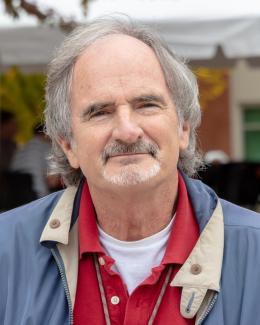August 2, 2016 – Susan Hogle has spent the last several years working to improve the production of radioisotopes, particularly californium-252. But not long ago, the native of Napanee, Canada, was working on the opposite task—researching how to dispose of nuclear material.
“At Chalk River Laboratories, I was interested in what the waste was, how it got there, and how we could get rid of it,” said Hogle, a nuclear engineer at the Department of Energy’s Oak Ridge National Laboratory. “A lot of that entails knowledge of the same mechanisms we use to produce radioisotopes, especially those heavier than uranium.”
After she graduated from the University of Toronto with a degree in mechanical engineering, Hogle designed infrastructure upgrades for facilities at Chalk River, Canada’s nuclear laboratory, but she knew “cool stuff” was taking place inside the structures she was helping to improve.
Through interactions with consultants from Oak Ridge working at Chalk River, she learned of the large nuclear engineering community and high-impact research taking place between the University of Tennessee and ORNL. Ultimately, those factors pushed her southward for graduate work at UT, with a hope of hiring on at ORNL.
“I thought working at a lab would be great to do as a graduate student. It worked for me once; maybe I’d strike gold again,” Hogle said.
As she pursued her PhD, Hogle interned with the Radiochemical Engineering Development Center at ORNL and found the professional home she wanted. She turned her work as an intern into a basis for a PhD—modeling techniques for the optimization of californium production—while gaining additional insight into the operations surrounding isotope production.
“I was able to integrate myself into the group and take on additional projects, even as a graduate student. It was clear to me I wasn’t going to be limited if I worked here.”
Hogle received funding from the DOE Office of Science’s Office of Nuclear Physics as she joined ORNL’s Nuclear Security and Isotope Technology Division full-time in 2013. Since then, she’s conducted research toward validation of the theories from her PhD research.
Much of that validation focuses on building small-scale targets, irradiating them in ORNL’s High Flux Isotope Reactor, and analyzing whether production improvements were made—improvements that include reducing the amount of curium used to produce californium, since limited amounts of curium exist. Additionally, she’s working in collaboration with researchers in ORNL’s Reactor and Nuclear Systems Division on improving the computer modeling and simulation tools used in isotope production.
“I was able to see tangible results and gain experimental validation of my modeling work. We’ve shown you can make improvements to californium production on a smaller scale, so we hope that one day our techniques might be used in full-scale production,” Hogle said.
For Hogle’s research, the next step is testing her optimization techniques on larger quantities. One proposal under review is to test her techniques in production of berkelium-249. If that proves promising, production tests will continue to grow in scale.
Outside of the lab, Hogle spends weekends with her husband Ryan Landfield, a PhD student at UT and an ORNL subcontract employee who is modeling supernovas on the Titan supercomputer. Hogle’s also active with the local section of the American Nuclear Society and chairs its education outreach committee.
“To get out there and teach people about radiation and its sources, that’s very important to me. I love those workshops and having that opportunity to share that knowledge,” Hogle said.
ORNL is managed by UT-Battelle for the Department of Energy’s Office of Science, the single largest supporter of basic research in the physical sciences in the United States. DOE’s Office of Science is working to address some of the most pressing challenges of our time. For more information, please visit energy.gov/science. – By Jason Ellis



